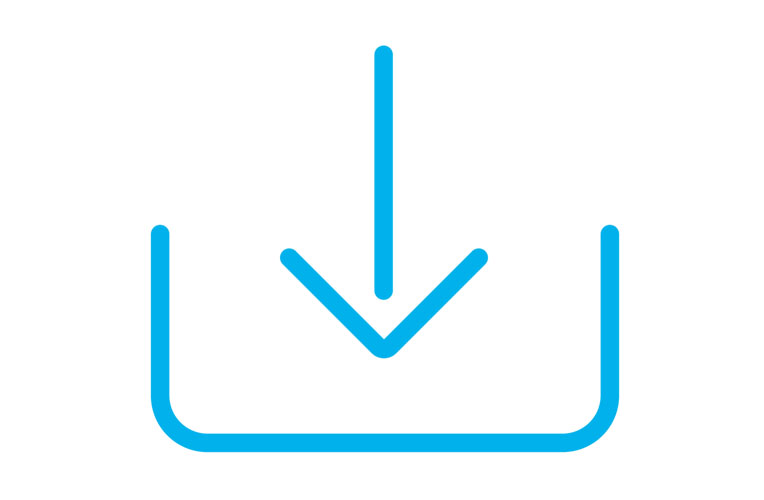Custom Sensors
Does ZF Manufacture custom Proximity and Speed Sensors?
Absolutely. In fact, most of our sensor business is custom in nature. Here are a few examples of custom products we’re designing and building:
- Rotary position sensors
- Magnetic encoders
- Ignition timing sensors
- Single-chip magnetic speed & direction sensors
- Dual-chip programmable speed & direction sensors
- Digital accelerometers for machine vibration sensing
Our engineering staff exists to meet the needs of OEM sensor customers, so we’re equipped with all the necessary customization and prototyping tools, including magnetic modeling, stereolythography, and a certified in-house qualification test lab.
Geartooth Sensors
Without a gearwheel target, is it possible to sense the travel of a ferrous roller chain?
Yes. Although we commonly call them “geartooth” sensors, ZF speed sensors can sense the rotation or motion of a variety of discontinuous shapes, provided that the target is ferrous. In addition to gears, feasible targets can include roller chains, bolt heads, sprockets, and cavities in a smooth surface. Of course, the shape of the target, the height of the teeth, the pitch of the teeth and other factors all influence the feasibility of the target, so if you’re uncertain, give us a call. Our engineering group will be glad to help you optimize your magnetic and electrical circuits.
How do I know whether my target is a suitable material for use with the Geartooth sensor
A feasible target needs to be ferrous, so a good starting point is to check whether a magnet sticks to it. The ideal material is a low-carbon cold-rolled steel.
Can ZF Speed Sensors tell me which direction my target is spinning?
There are a couple of different answers to this question, depending upon your target and your requirements.
- If your target is a regular gearwheel, then a ZF SD Series Speed & Direction sensor will provide you with both speed and direction output. This is possible because the SD Series sensor has two Hall effect IC’s inside, slightly offset from each other. Internal conditioning logic analyzes the phase difference between the two sensors to determine the direction of target rotation. Of course, two single-chip GS series sensors can also be used to provide phase information to your processor, which can then calculate direction of rotation, but then you’d have to buy two sensors.
- If you’re looking at a high-volume program, you might also want to consider constructing a multi-pole magnetic wheel as your target. With a magnetic wheel target, we can build a custom speed and direction sensor that can be quite economical compared to typical geartooth sensing solutions.
How does a ZF speed and direction sensor give me directional info?
The standard SD Series sensor has two separate digital outputs. It uses an open collector (sinking) output, so the speed output switches from high (Vcc) to low (close to zero) when it sees a transition from “no-tooth” to “tooth present”. The separate direction output is high when the gear rotation is clockwise and low when the gear rotation is counter-clockwise. Of course, if you crawl around to the other side of the gear, then clockwise becomes counter-clockwise, but you’ll figure it out.
How far away should I place the sensor from my target?
Unfortunately, there’s no standard answer to this question because the appropriate distance is target-dependent. In general, smaller gearteeth drive the need for a smaller airgap, and larger gearteeth allow for larger airgaps. As a ballpark rule-of-thumb, consider starting with an airgap of .040” to .080” (1 to 2mm). Feel free to call ZF’s engineering department to discuss how the features of your proposed target can influence appropriate airgap.
What is the maximum operating speed of a ZF Geartooth sensor?
This is somewhat dependent on the target and the particular sensor you choose, but the maximum frequency is generally >10 kHz. Care must be taken in calculating the frequency, depending on target geometry. With asymmetrical targets, say ones with narrow tooth widths compared to tooth gaps, the time between the leading and trailing edge of the tooth is generally the governing factor. Our sensors have maximum response times of approximately 10 μS to 50 μS (MP series versus GS series) due to internal Hall cell processing schemes. If your response time is close to these numbers, unexpected results, such as lost counts, can occur.
What is the minimum operating speed of a ZF Geartooth Sensor?
As opposed to a variable reluctance sensor, a ZF GS Series geartooth sensor has an output amplitude that is independent of input frequency. This means that it does not require any minimum speed. It does, however, require some initial movement of the target in order to locate the tooth edge. That’s why we prefer to call it a “near-zero-speed” sensor, whereas some folks refer to similar products as “zero-speed” sensors.
When I mount a Geartooth sensor, do I need to worry about its rotational orientation?
No, the ZF GS Series geartooth sensors are not orientation-sensitive. The ZF SD Series speed & direction sensors do have an orientation requirement, and the appropriate orientation is noted on the part itself.
What is the expected operating life of a ZF Geartooth sensor?
A ZF geartooth sensor is a solid state device with no moving parts, so its operational life is virtually unlimited.
When does the volatage of a sinking output sensor drop?
A ZF GS Series geartooth sensor could be described as an “edge detector” or a “gradient sensor” or a “differential sensor”. All of these terms are trying to describe that the sensor does not sense the face of the geartooth, but rather the transition from tooth to no-tooth (or vice-versa). This means that when you initially power-up the sensor, the sensor will be idle until it sees the first transition between tooth and no-tooth. With a sinking output, the transition from no-tooth to tooth will cause the output signal to switch from VCC to VSAT (for example, with a 5vdc supply, the output would switch from 5vdc to less than 700mV).
A nice feature of this “edge detector” sensor is that it is self-adjusting. This means that it can adjust to worn gears, imperfect tolerances, and gear wobble.
Magnetic Proximity Sensors
Does it matter if I use a North Pole or a South Pole to operate a ZF Proximity sensor?
It depends on the sensor. Most of the solid state sensors in our standard product line are sensitive only to the South pole of a magnet. The following are the exceptions:
- MP100105 and MP100106, which use GMR sensing elements and which are omnipolar. This means that they can be activated by either a North pole or a South pole
- MP101303 and MP101304, which are bipolar latching sensors. They are latched with a South Pole and unlatched with a North pole
- The MP1021 series, which includes both North pole-sensitive devices and latching devices.
- All of the reed sensors (MP2007 through MP2019), which are omnipolar.
How far away should my magnet be in order to operate a Magnetic Proximity Sensor?
There’s no easy answer to this question because it depends on your magnet. In general, we can tell you that nearly every user of magnetic proximity sensors employs an airgap of less than 1 inch. The majority uses an airgap of less than ½ inch, and an airgap of ¼ inch is typical. Having said that, you really need to evaluate the magnet and the sensor in order to assess the appropriate airgap for your application. ZF engineers can help you model your magnetic circuit and can even help you select and/or design a magnet, so if you need help, please give us a call.
Are some ZF Magnetic Proximity Sensors more sensitive than others?
Most of the standard products are similar in sensitivity, but there are a few exceptions. The bipolar latching sensors, such as MP101303 and MP102104 have relatively low gauss thresholds, allowing for somewhat wider airgaps. The most sensitive of all are the MP100105 and MP100106, which use a highly sensitive GMR sensing element. These two devices are also omnipolar, meaning that they’re indifferent to the polarity of your magnet.
How do I know whether my application is better suited to Hall or Reed technology?
Although they are both magnetic proximity sensors, Hall effect sensors and reed sensors are significantly different in the way that they function. A Hall effect sensor is a three-wire, solid-state device whose output changes when exposed to a magnetic field. A reed sensor, on the other hand, is electrically a switch, with tiny contacts that open or close in the absence or presence of a magnetic field. In many applications, either device could be used, but there are also some situations where one technology may be preferable over the other.
A Hall effect sensor may be preferable to a reed sensor if you have the following requirements:
- Unlimited life. For example, if you are interested in sensing a spinning magnet that will operate a sensor billions of times, you should consider a Hall effect sensor. Reed sensors generally have very long life compared to other electro-mechanical devices, but they cannot match the virtually infinite life of a Hall effect sensor.
- Your application can’t tolerate any contact bounce.
- You’re looking to do geartooth speed sensing or rotary position sensing. A reed sensor is restricted to binary position sensing, and it doesn’t function as a geartooth sensor.
A reed sensor may be preferable to a Hall effect sensor if you have the following requirements:
- You need a two-wire device that requires no power (perhaps to conserve battery power).
- You require immunity to ESD and have a low target price (Cherry does make Hall effect sensors with ESD immunity, but this costs a little more).
- You want to provide a supply voltage that is outside the typical 5 vdc to 24 vdc supply voltage range for Hall effect sensors. For example, reed sensors can effectively switch 110 vac at low current.
What is meant when referring to a Reed Sensor as "Form A", "Form B" or "Form C"?
This is a short-hand way of describing the contact configuration. A “Form A” reed sensor is normally open in the absence of a magnetic field, then closes when a magnetic field is nearby. A “Form B” sensor is just the opposite – it’s closed in the absence of a magnetic field and open when a magnetic field is nearby. A “Form C” sensor has three leads, which represent the normally open, normally closed and common contacts. This is called a “changeover” device because the common contact changes from the normally closed position to the normally open position when a magnetic field is nearby.
Vane Sensors
What sort of material do you recommend I use to operate a ZF vane sensor?
In order for a ferrous vane sensor to operate, the vane has to interrupt the flow of magnetic field from the magnet to the sensor, but the vane itself should not become magnetized. Low carbon cold-rolled steel makes an excellent ferrous vane.
How deeply do I need to insert the Vane to ensure proper function of the Sensor?
We recommend that your vane should penetrate to a depth that is less than .120” from the bottom of the sensor slot.
What advantages does a Ferrous Vane Sensor have over a typical Opto-Interrupter?
There are a few potential advantages, depending upon your application:
- Since opto-interrupters rely on the detection of light, contamination that inhibits the detection of light can interfere with sensor performance. Ferrous vane sensors are immune to dust, dirt and grease.
- We also recommend ferrous vane sensors for their stability at high temperatures. ZF offers standard vane sensors with maximum operating temps up to 125C.
- You should also consider a ferrous vane sensor if your sensor’s ambient environment includes infrared light interference.
Interfacing, Signal Conditioning, Interference
What do I need to do to get a signal from my ZF solid state sensor?
ZF’s solid state sensors use sinking and sourcing interfaces. For sinking interfaces, you need to select an appropriate external pull-up resistor, and for sourcing interfaces, you need to select a pull-down resistor.
ESD
Are ZF Sensors ESD sensitive?
The answer depends on the sensor type, so let’s look at them in three categories:
- ZF reed sensors are not solid state devices, and they’re immune to ESD.
- The following solid state series are equipped with additional circuitry to enhance ESD immunity: MP1001, GS1001-1004, GS1012, SD1002-1004. These sensors have been tested for ESD immunity in accordance with IEC publication 1000-4-2 using test standard EN50082-2. Call ZF’s sensor engineering department if you’d like to learn about these tests.
- The following sensors should be treated as ESD sensitive and should be handled like other ESD-sensitive devices: MP1005, MP1013, MP1021, GS1005-1009, VN1015, HE3135.




